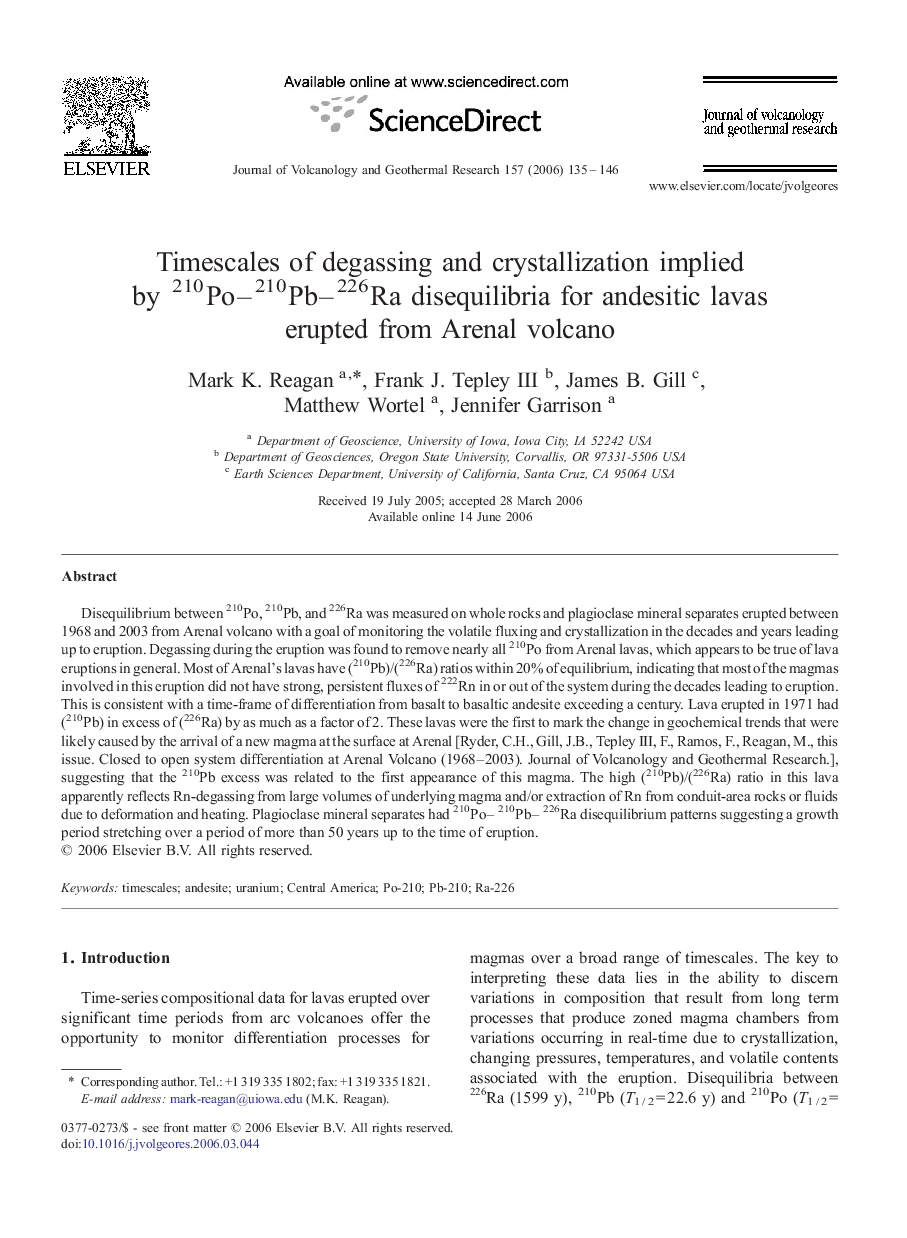| Article ID | Journal | Published Year | Pages | File Type |
|---|---|---|---|---|
| 4715362 | Journal of Volcanology and Geothermal Research | 2006 | 12 Pages |
Disequilibrium between 210Po, 210Pb, and 226Ra was measured on whole rocks and plagioclase mineral separates erupted between 1968 and 2003 from Arenal volcano with a goal of monitoring the volatile fluxing and crystallization in the decades and years leading up to eruption. Degassing during the eruption was found to remove nearly all 210Po from Arenal lavas, which appears to be true of lava eruptions in general. Most of Arenal's lavas have (210Pb)/(226Ra) ratios within 20% of equilibrium, indicating that most of the magmas involved in this eruption did not have strong, persistent fluxes of 222Rn in or out of the system during the decades leading to eruption. This is consistent with a time-frame of differentiation from basalt to basaltic andesite exceeding a century. Lava erupted in 1971 had (210Pb) in excess of (226Ra) by as much as a factor of 2. These lavas were the first to mark the change in geochemical trends that were likely caused by the arrival of a new magma at the surface at Arenal [Ryder, C.H., Gill, J.B., Tepley III, F., Ramos, F., Reagan, M., this issue. Closed to open system differentiation at Arenal Volcano (1968–2003). Journal of Volcanology and Geothermal Research.], suggesting that the 210Pb excess was related to the first appearance of this magma. The high (210Pb)/(226Ra) ratio in this lava apparently reflects Rn-degassing from large volumes of underlying magma and/or extraction of Rn from conduit-area rocks or fluids due to deformation and heating. Plagioclase mineral separates had 210Po– 210Pb– 226Ra disequilibrium patterns suggesting a growth period stretching over a period of more than 50 years up to the time of eruption.
